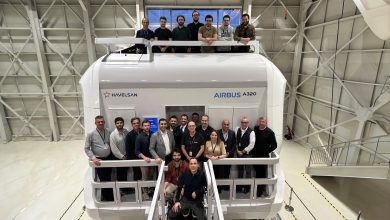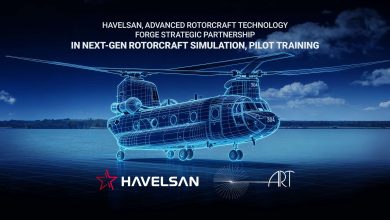
Navigating a New Era: How HAVELSAN MATRA is Transforming Maritime Safety and Operational Excellence with Cutting-Edge Vessel Traffic Solutions
HAVELSAN MATRA Vessel Traffic Services (VTS) have become progressively vital in enhancing safety and maritime traffic efficacy. HAVELSAN features a cloud-based technology platform that can operate on-site or in the cloud, delivering a solution that reduces costs while enhancing accessibility, performance, and security. This system is adept at incorporating operational sensors. These operational sensors may include Radars, Electro Optic Systems, Direction Finders, AIS Receivers, Meteorological Sensors, Oceanographic Sensors, or any other sensor deemed necessary for operations. The HAVELSAN MATRA (VTS) solution can manage an extensive volume of data generated by all entities within the maritime domain. Utilizing this data, the system can forecast and avert accidents, identify environmental pollution and maritime traffic irregularities, and assess traffic in real-time.

HAVELSAN presents a coastal surveillance and maritime traffic management solution wherein all associated sensors and connected agencies are seamlessly integrated, facilitating the exchange of information for more reliable outcomes through an intuitive integration interface architecture.
The radar and AIS tracks are amalgamated through fusion & correlation modules and depicted on the operational map. System tracks are automatically linked with archived vessel data. The Vessel Database Management (VDM) module oversees information concerning vessels, vessel categories, crew, ports, voyages, cargo types, etc. Operators can add, remove, update, and query all data from the vessel database. They will have the capability to manually set the time of the vessel records. Detailed vessel and crew reports can be generated using the reporting functions.

The system facilitates mission planning and management, route planning, platform count, etc. It also takes into account the locations of stations, hospitals, and logistic support sites (including oil, food, and water). When planning a mission for incident intervention, the most suitable platform will be determined and suggested to the system operators. Mission zones will be illustrated on the geographic map layer during planning. Tools for route planning using waypoints and route segments will be made available. While planning routes, the kinematic limits of the platform will be monitored. If these limits are exceeded or violated, the system alerts the operator through advanced alarm management functionality. The route-time diagram for the probable course of the vessels assigned to the route is calculated and presented to the operator, including encounter points.
The notification management component offers features for establishing rules and thresholds while delivering visual & auditory alerts. Users will be empowered to define rules regarding operational entities, set threshold values, and specify areas for both track management and operational entities. The system checks every update against predefined criteria, triggering alerts if any conditions are met, with notifications being dispatched based on user preferences. Published alerts are filtered according to user permissions and directed to those authorized to view them.

Search & Rescue (SAR) operators can designate the search and rescue region, partition this region into areas, prioritize these segments, allocate task organization components to these regions, and disseminate this information to relevant units. Various search and rescue patterns and coverage volumes will be supported to visualize and manage SAR execution activities.
The Tactical Record and Replay (TRR) module furnishes the system with capabilities for data recording and replay. TRR captures ship movements (Radar Tracks, AIS Tracks, Correlated System Tracks), screen recordings, voice communications, EO and Radar video, meteorological data, sensor status, and notification logs for future playback.
Historical data is obtainable for regular maritime traffic activities, and the aforementioned methods can be augmented by Artificial Intelligence (AI) algorithms to identify marine traffic anomalies. This anomaly detection will also significantly reduce the number of “dark vessels” that require investigation and focus.
Risk assessment and decision support tools, as a component of HAVELSAN MATRA (VTS), empower users to conduct risk evaluations and establish rule-based alerts, warnings, or actions to further assist in utilizing the knowledge-based features of VTS for classifying or identifying vessels.
At present, there are approximately 500 VTS systems across nearly 50 nations. Given the extent of these systems and the array of their sensors (Radar, EOS, AIS, RDF, etc.), HAVELSAN MATRA (VTS) operational in the Turkish Straits is recognized as one of the world’s most extensive VTS networks.
The reimagined and upgraded system is expected to elevate the existing vessel traffic services in the Turkish Straits to a superior level in terms of quality and quantity, thereby enhancing the safety and security of navigation, life, assets, and the environment—the primary objectives of navigation, which include the safety of life, assets, and the environment, alongside more secured and expedited vessel traffic.
Engineered by HAVELSAN specialists, HAVELSAN MATRA (VTS)’s open-source software architecture, scalable modular structure, customizable modules & algorithms, advanced fusion & correlation technologies, and operational reliability with HAVELSAN’s endorsement provide a pragmatic solution and a distinctive user experience in regions with heavily congested vessel traffic. HAVELSAN MATRA (VTS) is poised to serve both domestic and international members of the e-maritime community by integrating cutting-edge, state-of-the-art technologies into its framework.










